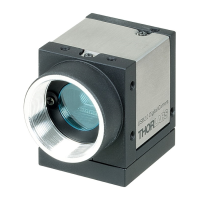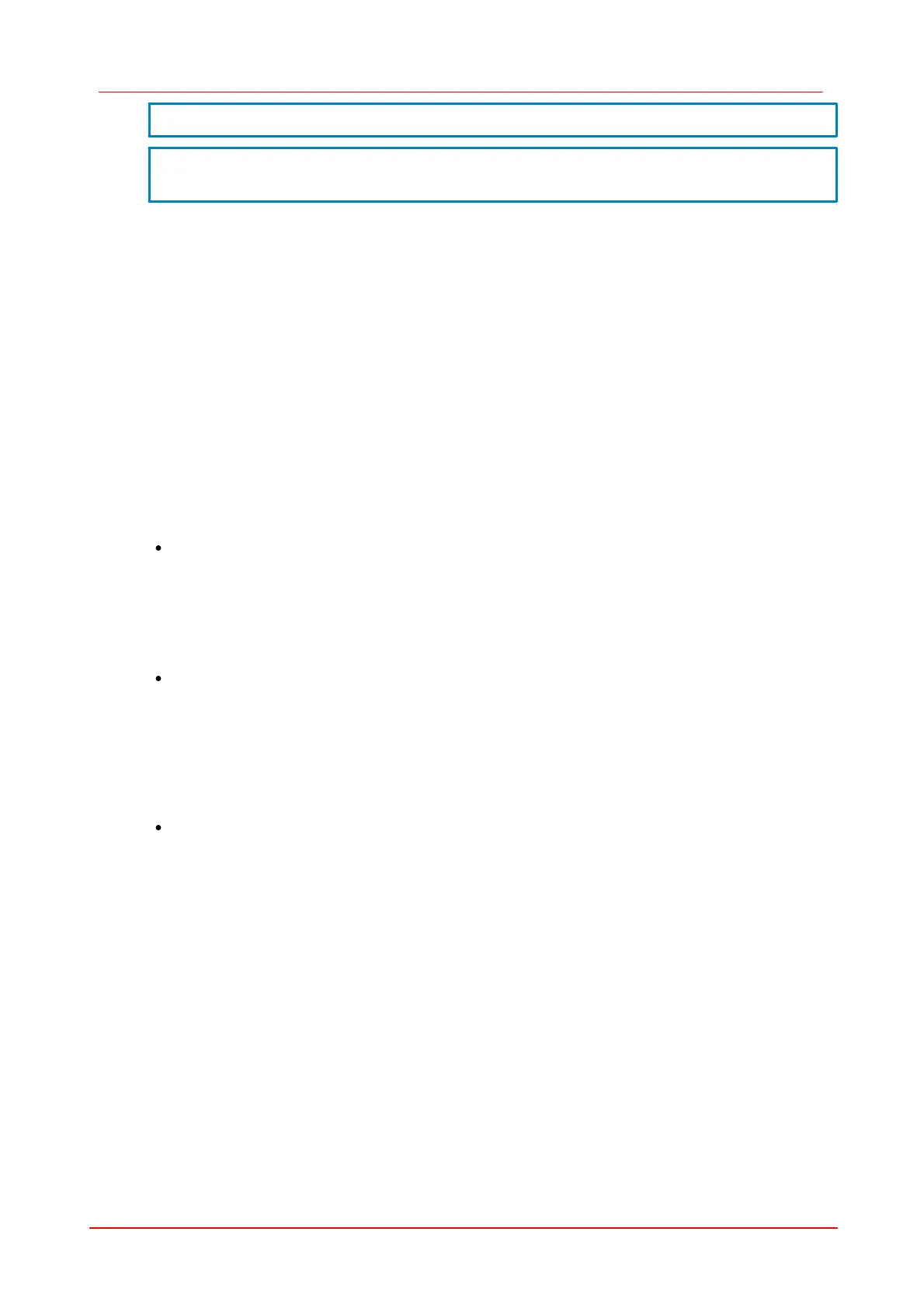371Camera Basics
© 2010 Thorlabs
also influence the bandwidth required for a camera.
The pixel clock influences the connected load and consequently the temperature
inside the camera.
Frame rate
The possible range of settings for the frame rate depends on the currently selected pixel clock. You
can select a lower frame rate without changing the pixel clock. To set a higher frame rate, however,
you need to increase the pixel clock.
Exposure time
The exposure time depends on the currently selected frame rate and is preset to its reciprocal value.
You can select a shorter exposure time without changing the frame rate. To set a longer exposure
time, however, you need to reduce the frame rate.
9.5
Image Display Modes
The DCx driver provides three different modes for the display of captured images: The device
independent Bitmap mode (DIB), DirectDraw BackBuffer mode and DirectDraw Overlay mode.
Device Independent Bitmap mode (DIB)
In Bitmap mode, images captured by the DCx are written to the random access memory of the
PC. The application software initiates the image display by the graphics card. This may result in a
slightly higher CPU load as compared to the DirectDraw display.
The advantage of Bitmap mode is that it is compatible with all graphics cards and that image data
in the memory is directly accessible. Since Windows controls the image display, the image may
be completely or partly overlapped by any other windows and dialog boxes.
DirectDraw BackBuffer mode
In this mode, the DCx driver writes the image data to the invisible memory area (back buffer) of the
graphics card. This process runs automatically and does not have to be controlled by the
application software. It requires an installed DirectDraw driver, sufficient memory on the graphics
card and back buffer function support by the graphics card.
For this purpose, graphics cards generally provide better performance than graphics chips
integrated on the mainboard. In DirectDraw mode, the CPU load may be lower than in Bitmap
mode.
DirectDraw Overlay Surface mode
This mode enables simultaneous display of a live image and overlay data. The video image is
digitized and stored in an invisible memory area (back buffer) of the graphics card. Defining a key
color and drawing that color to the image output window results in the video image being displayed
in all areas of the output window that have this key color. If the key color fills the entire window,
the video image is displayed full-screen. Accordingly, graphics/text data is preserved in all areas
not filled with the key color. This produces a non-destructive overlay. The display is controlled by
the graphics card chip and therefore hardly requires any CPU time. This mode is not supported by
all graphics cards, and often, it can only be used in conjunction with the YUV color mode.

